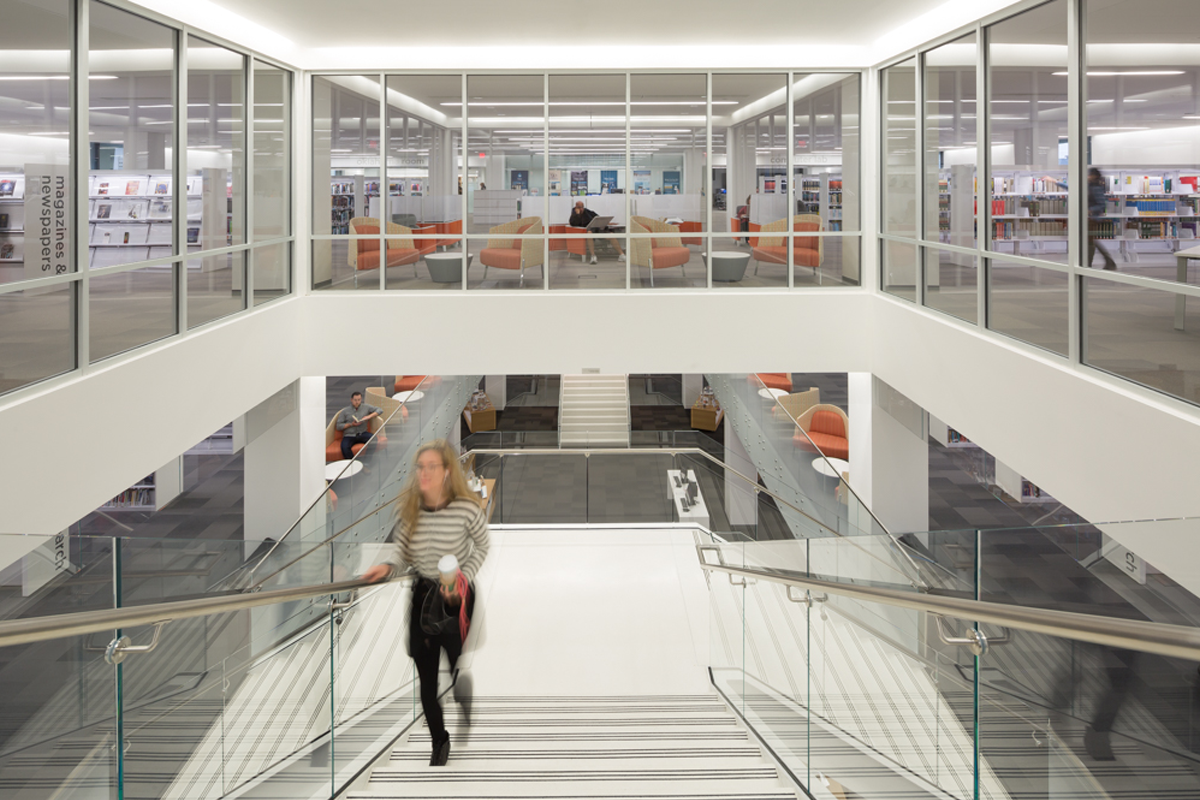Answering the question: Why can't glass be fireproof?

Creating a safe environment for occupants is so important that councils and associations have developed building codes to ensure each building fulfills certain baseline requirements. In turn, independent testing agencies have standardized protocols so architectural products can quantifiably demonstrate how they contribute to safer designs and reliably meet today’s building codes. These tests range from fire-resistance to impact- and forced-entry resistance and more. Sometimes these standards simplify the design process since they provide specific requirements, but other times they may make planning a safer building more complex as designers have to plan for multiple contingencies.
For instance, when it comes to guarding occupants against fire, architects may be on the hunt for “fireproof” glass (or other materials) as this may seem to be a cure-all for fire safety. However, their searches may be in vain. While the term fireproof glass provides a definitive answer to how a product will keep occupants safe, its certainty is what makes it problematic as a material classification. To be fireproof, glass would need to guard against all possible fire conditions. Given the limitations of testing facilities when compared to the nearly infinite ways a fire can happen and progress, the industry-standard term, fire-rated, provides more detail as to how a glazing system works and the limits of its performance capabilities.
Fireproof glass vs. fire-rated glass: what's the difference?
Fireproof glass, as the name suggests, would be glazing that is completely impervious to fire. While this description may seem like the best possible type of fire rating, it does not acknowledge the reality of the built environment. Fires can vary in heat, intensity, temperature rise curves, explosiveness and more. In addition, building design can influence how fires burn and spread. The actions of first responders, too, impact the qualities of a fire—for instance, creating an opening may change the direction of heat or provide oxygen to reignite an ember.
Because there are so many variables around fires in the built environment, calling a product “fireproof” does not define its actual performance capabilities. On the other hand, fire-rated glass is tested and classified in a way that makes it easy for building professionals to discern its capabilities. For instance, it receives a rating from an independent testing laboratory that follows standard protocols: setting temperature rise rates, maximum temperatures, exposure time and the pressure of hose streams. The results are highly quantified and specific, which allows designers to know more about how an assembly will behave when subjected to tests that mimic conditions common during a fire. These results are permanently affixed to the glass and contain all the information a designer (or inspector) needs to know.
So the question is not so much what’s the difference between fire-rated and fireproof glass and more can glass be fireproof? The answer to that question is no. What it can be is fire-rated based on standardized testing protocols.
Why can't testing agencies certify fireproof glass?
As noted earlier, one building fire can vary significantly from another. Floorplans, building materials, ignition points, open windows or doors, occupancy type, time of day and more can change how hot a fire burns, the speed at which it reaches its maximum temperature, how quickly it spreads and how long it will take first responders to arrive. Some may even say no two fires are exactly the same.
Because fires can have such wide-ranging characteristics, it is virtually impossible to test for every way a fire-rated system may be exposed to heat, smoke and flames. There is always a chance that a fire will burn hotter, quicker and more intensely than past examples, making the term fireproof glass not only inaccurate but also potentially dangerous.
Today’s fire tests are designed to model common characteristics of fires within the built environment. They also provide a record of temperatures and exposure durations a glazing assembly can resist before failure. As such, they give precise and quantifiable data to specifiers so they can choose an assembly that satisfies code requirements and project intent.
How can fire-rated glass be used?
Fire-rated glass can be used in door, window and wall assemblies. It can also help create visually connected stairwells, fire barriers that support building compartmentalization, transparent curtain walls, floor systems and much more. In fact, fire-rated glazing can be used in most applications that require fire-rated materials. It can meet code requirements without sacrificing open sightlines and access to daylight. This gives designers more freedom and flexibility to create awe-inspiring and occupant-centered architecture.
Notably, architects were previously limited in terms of size and the amount of fire-rated glazing they could use in a design. Today, thanks to material advances, such as the development of fire-rated glass with intumescent interlayers, this type of glazing is able to pass fire-resistance-rated tests and exceed 25 percent of the total wall area. In fact, some systems can function as an entire wall without needing vertical mullions, making it possible to provide a nearly invisible fire barrier. Additionally, fire-rated glazing can be combined with compatible security-rated components to create multifunctional systems. These assemblies can help project teams meet security goals while also achieving fire- and life-safety code requirements.
And because rated assemblies come with quantifiable data, as opposed to claims for fireproof glass, they give specifiers more information as to how they contribute to building safety goals. To help parse the information on fire ratings, there are several tools and resources available online that list which testing standards an assembly meets and what applications are appropriate for a product.



 David Vermeulen is North America Sales Director for Technical Glass Products and also the author of the Fired Up blog on Glass Magazine.
David Vermeulen is North America Sales Director for Technical Glass Products and also the author of the Fired Up blog on Glass Magazine.